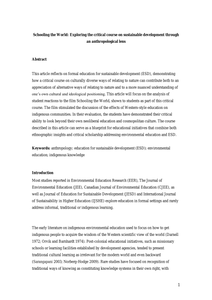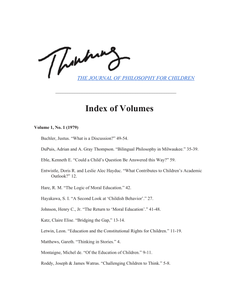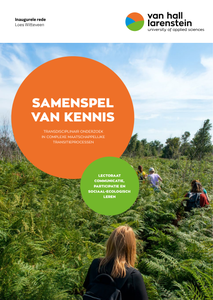The fifth book in the Ebifananyi series is based on the memoirs and slide collection of Engineer Martin Wangutusi Wambwa (b. 1928). He is one of the first western trained Ugandan engineers. Journalism and photography would have been his second vocational choice, had his engineering ambitions not worked out.Uhuru (Swahili for freedom/independence) works towards and around the idea of Uganda’s independence. Wambwa’s slides show a (literally and figuratively speaking) colourful, clean and optimistic place. His memoirs take us through what it meant and took for him to be educated the way he was, leading to a climax in which things started to change from ‘Uhuru na kazi’ (Freedom and Work) to ‘Uhuru na vita’ (Freedom and War).Three contemporary photographers were invited to engage with and respond to Wambwa’s photographs. Elsadig Mohamed (SD), Luuk van den Berg (NL) and Rumanzi Canon (UG) did this with each a different visual strategy related to their own practices as photographers.The work presented in this book was part of the City Remixing exhibitions that took place in Uganda (March 2016) and The Netherlands (April 2016). Video documentation of the shows is also available: NL, and UG.
DOCUMENT
Fans constitute a very special kind of audience. They have been marginalized, ridiculed and stigmatized, yet at the same time they seem to represent the vanguard of new relationships with and within the media. ‘Participatory culture’ has become the new normative standard. Concepts derived from early fan studies, such as transmedial storytelling and co-creation, are now the standard fare of journalism and marketing text books alike. Indeed, usage of the word fan has become ubiquitous. The Ashgate Research Companion to Fan Cultures problematizes this exaltation of fans and offers a comprehensive examination of the current state of the field. Bringing together the latest international research, it explores the conceptualization of ‘the fan’ and the significance of relationships between fans and producers, with particular attention to the intersection between online spaces and offline places.
DOCUMENT

Le chevalier delibere (1483) by Olivier de la Marche has an extensive hermit scene: the hermit receives the author, Acteur, gives him food and drink and instructs him in the important issues of life. Le chevalier delibere thus stands in two main Western European literary traditions: stories about hermits as such (who do or do not provide travellers with food and shelter) and stories in which food and drink have an allegorical function. This paper will discuss both traditions, without attempting to cover all hermit stories or all allegories about food and drink.
DOCUMENT

Young widowhood, conceptualized as the loss of one’s spouse before the age of 50, is a profoundly painful and distressing loss (Den Elzen, 2017, 2018). The literature on young widowhood shows the death of a partner generally causes a fragmentation of the self, as it violates expectations of the normal life cycle, namely growing old together (Haase and Johnston, 2012; Levinson, 1997). Premature loss of one’s spouse tends to be experienced by the surviving partner as distressing or traumatizing, such as having witnessed their suffering in illness or through accident (Den Elzen, 2018) or in struggling with unfinished business (Holland et al, 2020). Whilst post-traumatic stress is well-known and has been widely researched across various disciplines, the concept of post-traumatic growth is much newer and by contrast has received less attention. PTG was introduced as a scholarly concept by Tedeschi and Calhoun in the mid-1990s and is defined as a positive psychological change as a result of the struggle with highly challenging life events (2004). Calhoun and Tedeschi’s notion of PTG has been backed by a recent systematic review. In the first meta-analysis of moderate-to-high PTG, Wu et al. found that of the 10,181 subjects, about 50% experienced PTG (2019). They also reported that women, young people and victims of trauma experienced higher levels of PTG than men, the elderly and those who experienced indirect trauma. PTG has attracted some controversy, with some researchers questioning its scientific validity (Jayawickreme and Blackie, 2014). Others caution against the minimization of people’s suffering. Hayward is a trauma counsellor who advises approaching PTG carefully, highlighting that if it is introduced with clients too early it can "often be construed as minimizing someone's pain and suffering and minimizing the impact of the loss" (cited in Collier, 2016, n.p.). In addressing the critique of PTG, Calhoun and Tedeschi (2006) emphasize that the focus on investigating positive psychological change following trauma does not deny the common and well-documented negative psychological responses and distress following severe life stresses: “Negative events tend to produce, for most persons, consequences that are negative” (p.4). They argue however, and their research supports this finding, that for many people distressful events can foster positive psychological changes. We view PTG as a possibility following (profound) loss, and emphasize that PTG may continue to co-exist with painful and/or unresolved emotions regarding the loss itself. We conceptualize PTG as a continuum and not as an either/or binary with grief. Further, we wish to highlight that PTG is a highly individual process that depends on many factors, and we are not suggesting that the absence of PTG is to be seen as a failure. This chapter intends to contribute to the study of PTG through a person-centered approach. The most used method to assess PTG is the 21-item posttraumatic growth inventory developed by Calhoun and Tedeschi in 1996 (Jayawickreme & Blackie, 2014). Self-reported posttraumatic growth has been the foundation of PTG research, which has aimed to identify to what extent PTG evokes improved psychological and physical health. In discussing our own creative narrative processes of PTG, our practice-led-research lens aims to contribute to research on how PTG might be fostered. We propose a Writing-for-wellbeing approach in this context and explore what it offered us both as writers and widows and what it might offer the field of Writing-for-wellbeing and by extension clinical and scholarly practice.
DOCUMENT

De versnippering van de internationale samenleving vermindert de kans op een overkoepelend model van global governance. Meer waarschijnlijk is het ontstaan van bepaalde processen van bestuur die zich ontwikkelen als reactie op specifieke mondiale vraagstukken. Dit artikel beschrijft het proces van implementatie van de US Foreign Corrupt Practices Act (FCPA) als een voorbeeld van een dergelijk bijzonder proces. Het FCPA 'model' wordt gekenmerkt door samenwerking en onderhandeling tussen de publieke en private sector. In dit model is het samenwerken voor het bieden van maatschappelijke veiligheid gebaseerd op wederzijds belang. De mogelijkheid van onderhandelde regelingen heeft een positief effect op het management van corruptie door bedrijven, dat zich verspreidt over de hele invloedsfeer van de onderneming. Tegelijkertijd biedt het de overheid toegang tot de informatie die nodig is om corruptie op te sporen, te onderzoeken en te vervolgen. Het in kaart brengen van dergelijke processen biedt nuttige inzichten over nieuwe benaderingen die nodig kunnen zijn om goed bestuur voor een veilige wereld te bereiken. ABSTRACT The fragmentation of international society reduces the likelihood of a single overarching model of global governance. More likely, is the emergence of particular processes of governance that develop in response to specific global issues. The paper describes the process of implementing the US Foreign Corrupt Practices Act (FCPA) as an example of one such particular process. The FCPA 'model' is characterized by co-operation and negotiation between the public and private sector. In this model, partnering for the provision of security is based on mutual self- interest. The possibility of negotiated settlements has a positive effect on the management of corruption by corporations with a ripple effect throughout the corporations' sphere of influence. At the same time, it provides governments with access to the information necessary to detect, investigate and prosecute corruption. Mapping such processes provides useful insights about new approaches that may be needed to attain good governance for a safe world.
DOCUMENT

Background: The dynamics of maternal and newborn care challenge midwifery education programs to keep up-to-date. To prepare for their professional role in a changing world, role models are important agents for student learning. Objective: To explore the ways in which Dutch and Icelandic midwifery students identify role models in contemporary midwifery education. Methods: We conducted a descriptive, qualitative study between August 2017 and October 2018. In the Netherlands, 27 students participated in four focus groups and a further eight in individual interviews. In Iceland, five students participated in one focus group and a further four in individual interviews. All students had clinical experience in primary care and hospital. Data were analyzed using inductive content analysis. Results: During their education, midwifery students identify people with attitudes and behaviors they appreciate. Students assimilate these attitudes and behaviors into a role model that represents their ‘ideal midwife’, who they can aspire to during their education. Positive role models portrayed woman-centered care, while students identified that negative role models displayed behaviors not fitting with good care. Students emphasized that they learnt not only by doing, they found storytelling and observing important aspects of role modelling. Students acknowledged the impact of positive midwifery role models on their trust in physiological childbirth and future style of practice. Conclusion: Role models contribute to the development of students’ skills, attitudes, behaviors, identity as midwife and trust in physiological childbirth. More explicit and critical attention to how and what students learn from role models can enrich the education program.
DOCUMENT

This article reflects on formal education for sustainable development (ESD), demonstrating how critical course on culturally diverse ways of relating to nature can contribute both to an appreciation of alternative ways of relating to nature and to a more nuanced understanding of one's own cultural and ideological positioning. This article will focus on the analysis of student reactions to the film Schooling the World, shown to students as part of this critical course. The film stimulated the discussion of the effects of Western-style education on indigenous communities. In their evaluation, the students have demonstrated their critical ability to look beyond their own neoliberal education and cosmopolitan culture. The course described in this article can serve as a blueprint for educational initiatives that combine both ethnographic insights and critical scholarship addressing environmental education and ESD. https://doi.org/10.1016/j.ijer.2013.10.002 https://www.linkedin.com/in/helenkopnina/
MULTIFILE

The journal was a forum for the work of both theorists and practitioners of philosophical practice with children, and published such work in all forms, including philosophical argument and reflection, classroom transcripts, curricula, empirical research, and reports from the field. The journal also maintained a tradition in publishing articles in the hermeneutics of childhood, a field of intersecting disciplines including cultural studies, social history, philosophy, art, literature and psychoanalysis.
DOCUMENT

Inaugurele rede uitgesproken bij de aanvaarding van het ambt van lector Loes Witteveen aan Hogeschool Van Hall Larenstein, 14 maart 2024. Het lectoraat Communicatie, Participatie en Sociaal-Ecologisch Leren (CoPSEL) werkt aan maatschappelijke vraagstukken rondom natuurlijke en sociale duurzaamheid, werkt sector- en discipline overstijgend met een centrale rol voor communicatie, participatie en leren.
DOCUMENT

In January 2017, relations between Greece and Turkey were under severe strain when warships from both sides engaged in a brief standoff near a pair of uninhabited Greek ‘islets’ in the Aegean, whose sovereignty is disputed by Turkey. Theoretically informed by the literature of foreign policy analysis, we examine how the Greek diplomats, military officers and political analysts interpreted Turkey’s behaviour at that particular time. The article considers the following research question: which factors, from a Greek point of view, explain Turkey’s foreign policy in the Aegean in January 2017? Our theoretical expectation is that, in the aftermath of the coup attempt in Turkey, Greek diplomats, military officers and political analysts would ascribe domestic calculations into Turkey’s activities. We employed Q- methodology to uncover socially shared perspectives on this topic. Based on our findings, we uncovered two viewpoints: (1) Turkey’s diachronic strategy in the Aegean and (2) the strongman style. According to the former and most widely shared viewpoint, a consistent ‘rationalist’ strategy to change the status quo in the Aegean explains Turkey’s behaviour. According to the second one, the belief system of Turkey’s leadership legitimises the use of force in the conduct of foreign policy.
MULTIFILE
